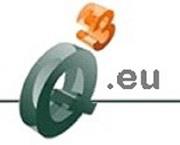Qualification of 3rd Sector in Europe: Difference between revisions
From Future Worlds Center Wiki
Jump to navigationJump to search
No edit summary |
m (Reverted edits by Drakos (talk) to last revision by Andreas Andreou) |
||
| (15 intermediate revisions by the same user not shown) | |||
| Line 26: | Line 26: | ||
|title_header= | |title_header= | ||
|content_header= | |content_header= | ||
|overall_objectives= | |overall_objectives= | ||
* Share 3rd Sector qualification experiences, debating conceptual and legal framework, financing and training models, successful practices, evaluation methods, competences recognition and other major results;<br | *Share 3rd Sector qualification experiences, debating conceptual and legal framework, financing and training models, successful practices, evaluation methods, competences recognition and other major results;<br> | ||
* Identify innovative solutions and practices for management and working models problems in 3rd Sector organisations and perspective their possible integration as 3rd Sector qualification tools;<br | *Identify innovative solutions and practices for management and working models problems in 3rd Sector organisations and perspective their possible integration as 3rd Sector qualification tools;<br> | ||
* Define joint training and consultancy standards, in result of partnership experience/results integration;<br | *Define joint training and consultancy standards, in result of partnership experience/results integration;<br> | ||
* Propose new European project proposals; | *Propose new European project proposals; | ||
* Create and enlarge the network of European partners, as a resource for these and other European partnership projects. | *Create and enlarge the network of European partners, as a resource for these and other European partnership projects.<br> | ||
|title_footer=Expected Results | |title_footer=Expected Results | ||
|content_footer= | |content_footer= | ||
* Development of relationships and networking activities among the participating persons and institutions, contributing to the development of synergies and mutual enrichment; | *Development of relationships and networking activities among the participating persons and institutions, contributing to the development of synergies and mutual enrichment; | ||
* Better understanding of the history, nature, diversity, roles, problems and challenges faced by nonprofit organizations in the participating countries and regions; | *Better understanding of the history, nature, diversity, roles, problems and challenges faced by nonprofit organizations in the participating countries and regions; | ||
* Dissemination of knowledge about different models, practices and materials used across Europe to qualify nonprofit organization and to develop their human resources; | *Dissemination of knowledge about different models, practices and materials used across Europe to qualify nonprofit organization and to develop their human resources; | ||
* New personal and institutional competences to assess the training needs within nonprofit organizations and to plan participatory training projects and initiatives; | *New personal and institutional competences to assess the training needs within nonprofit organizations and to plan participatory training projects and initiatives; | ||
* More creative and innovative approaches to solve management problems and other situations related to the performance of nonprofit organizations; | *More creative and innovative approaches to solve management problems and other situations related to the performance of nonprofit organizations; and | ||
* Design of joint training-consulting and/or research-training-action projects and initiatives, combining the experiences of the involved persons and institutions. | *Design of joint training-consulting and/or research-training-action projects and initiatives, combining the experiences of the involved persons and institutions. | ||
Latest revision as of 13:30, 7 November 2017
|
|
Overall objective(s)
|
Expected Results
|
